
Mold on Furniture: Causes, Removal, and Prevention
Mold is a common problem that can affect all types of furniture - outdoor lounge chairs, wooden dining tables, and leather sofas. This not only ruins its appearance but also poses potential health risks to inhabitants.
This article helps you understand the causes, effective removal methods, and preventive measures against mold that are essential for maintaining the longevity and aesthetics of your furniture while ensuring a safe living environment.
Causes of mold on furniture
Mold thrives in environments with high humidity and moisture. Furniture can become susceptible to mold growth due to various reasons, including:
Dampness and poor ventilation: Furniture placed in poorly ventilated areas or exposed to excessive moisture, such as basements or bathrooms, can provide an ideal breeding ground for mold.
Water damage: Furniture exposed to water leaks, spills, or flooding can absorb moisture, encouraging mold growth if not properly dried.
High humidity: In regions with high humidity levels, indoor air can become saturated with moisture, promoting mold growth on furniture surfaces.
Condensation: When warm air comes into contact with the cool surfaces of furniture, condensation occurs. This creates an environment conducive to mold development.
How to remove mold from furniture
Mold removal techniques may vary depending on the type of furniture and the material it is made from. Here are specific guidelines for dealing with mold on different furniture types:
Wood furniture
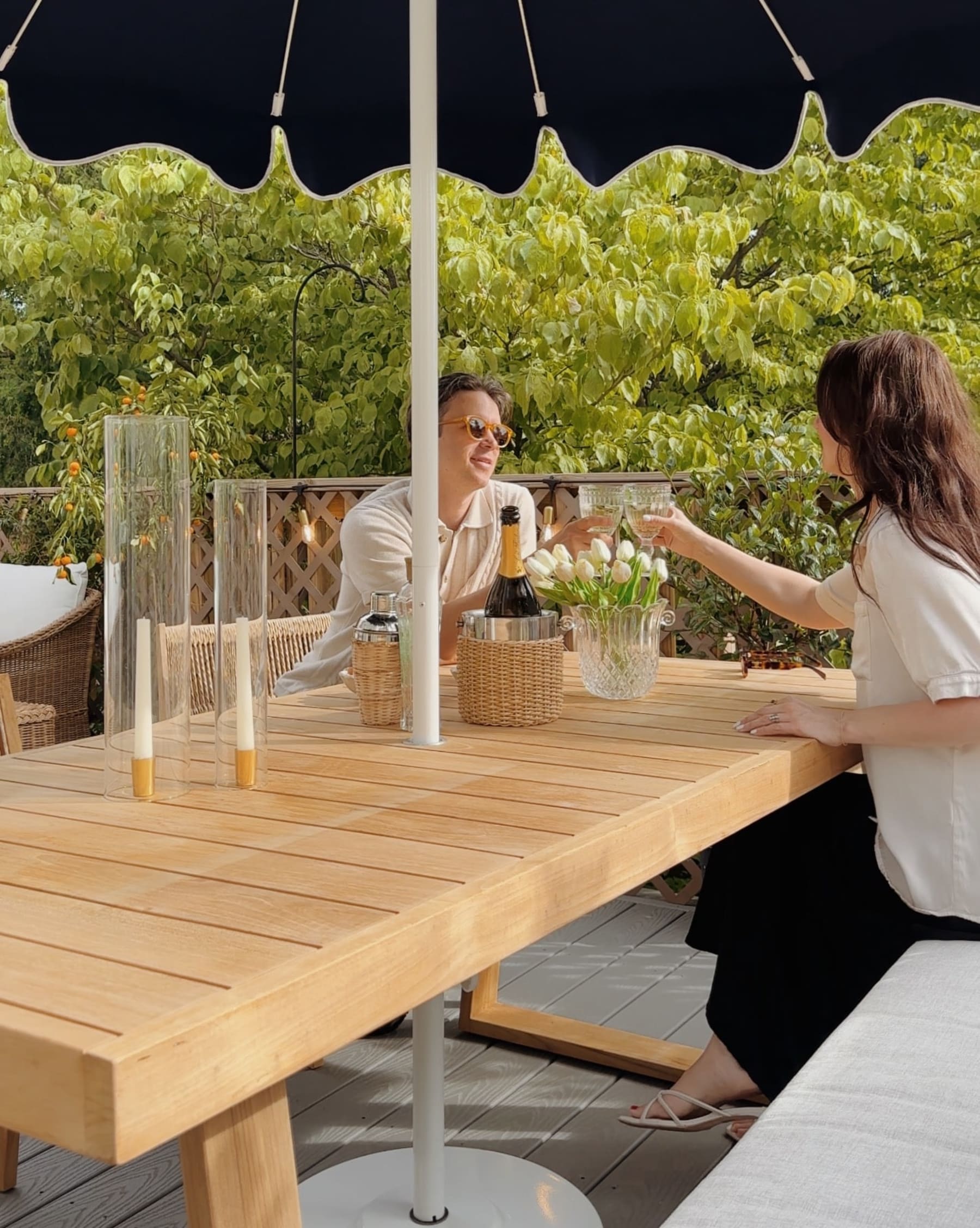
The Rio Teak Dining Table Set features solid teak wood. Picture credits: @reserve_home
Wooden furniture is particularly vulnerable to mold growth, as wood provides a food source for mold. But, proper care and protection of wood can prevent it! Here's how to remove mold from wood furniture:
Cleaning
Create a cleaning solution by mixing equal parts of water and white vinegar, or water and mild dish soap.
Before applying the solution to the entire piece of furniture, perform a spot test in an inconspicuous area to check for any adverse reactions.
Dip a soft cloth or sponge into the cleaning solution and gently scrub the moldy areas. Wipe the table in the direction of the wood grain and avoid using abrasive cleaners or harsh chemicals even for stubborn stains.
Avoid oversaturating the wood, as excessive moisture can cause further damage.
Rinse and dry
Wipe the cleaned areas with a clean, damp cloth to remove any residue. Then, thoroughly dry the furniture using a separate dry cloth.
Sanding (Optional)
If the mold has penetrated deep into the wood or caused stains, you may need to lightly sand the affected areas and then refinish the wooden furniture.
Upholstered furniture
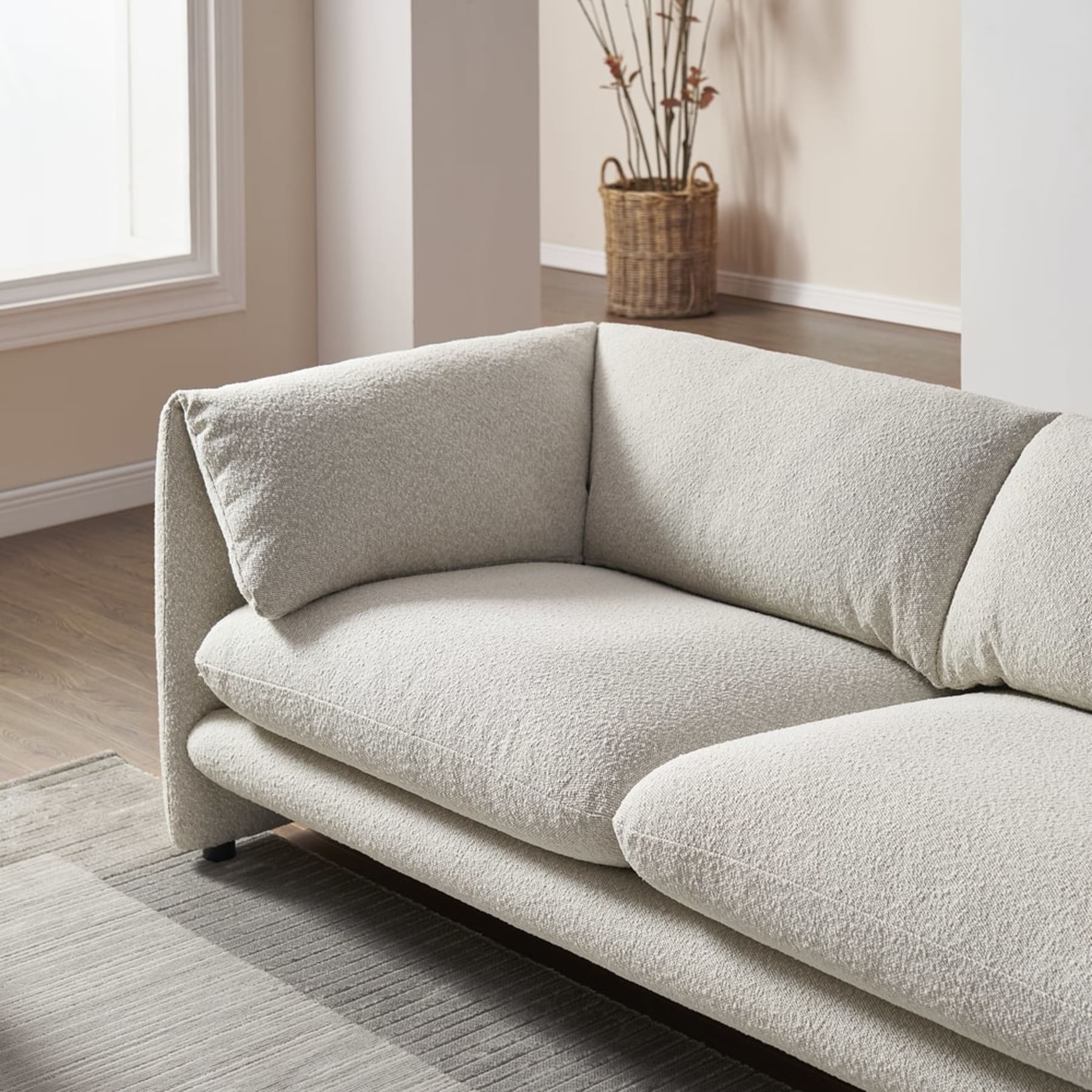
The Lucas Performance Bouclé Sofa features spill-resistant bouclé fabric which makes maintenance a breeze.
Upholstered furniture, such as most sofas and armchairs, can trap moisture, making them susceptible to mold growth. Here's how to tackle mold on upholstered furniture:
Vacuuming
Start by using a vacuum cleaner with a brush attachment to remove any loose mold spores from the surface of the upholstery.
Cleaning
Choose a fabric cleaner suitable for the type of upholstery and follow the instructions to spot-clean the moldy areas.
Alternatively, you can create a natural cleaning agent with a few household items. One solution is to mix baking soda and water into a paste, and the other is water and vinegar in equal parts.
Drying
After spot-cleaning moldy areas, use a dry cloth to blot excess moisture and allow the furniture to air dry in a well-ventilated area.
Steam or professional cleaning (Optional)
For more severe mold infestations, consider using a steam cleaner with an upholstery attachment to penetrate deeper into the fabric.
For valuable or delicate upholstered furniture, consider hiring a professional upholstery cleaning service with experience in mold removal to prevent any permanent damage to the furniture.
Leather furniture
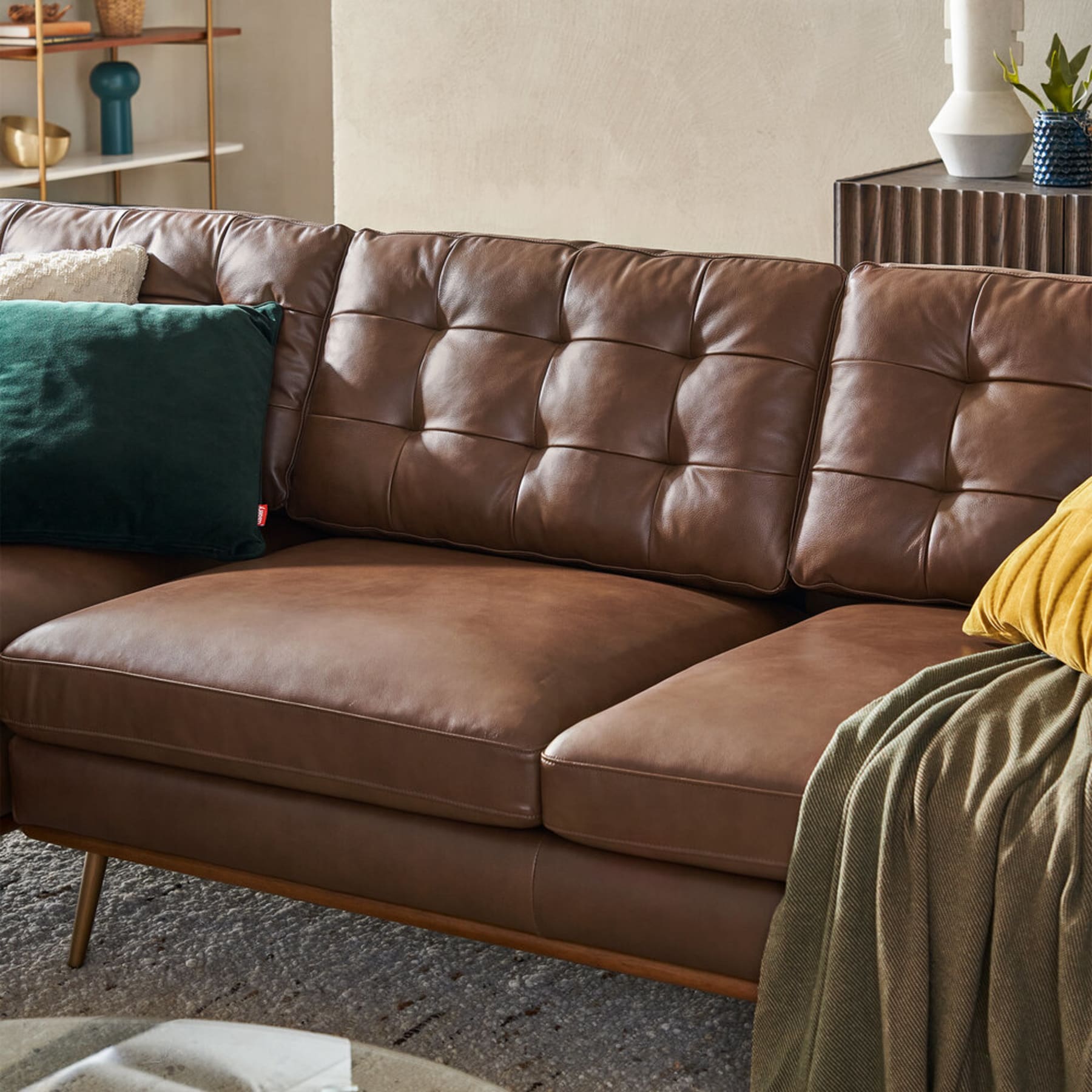
The Isaac Leather Sofa has tufted backrests for that classic mid-century modern look.
Leather furniture is susceptible to mold if exposed to high humidity or dampness. Here's how to remove mold from leather furniture:
Cleaning
Use a commercial leather cleaner or create a solution of equal parts water and white vinegar. Dampen a soft cloth with the cleaning solution and gently wipe the moldy areas on the leather furniture.
Drying
After cleaning, use a separate dry cloth to absorb excess moisture and allow the leather to air dry. Avoid leaving the leather furniture out in the sun to dry as this can cause the leather to crack.
Apply leather conditioner
Apply a leather conditioner to restore moisture and maintain the leather's quality after cleaning.
Wicker and rattan furniture
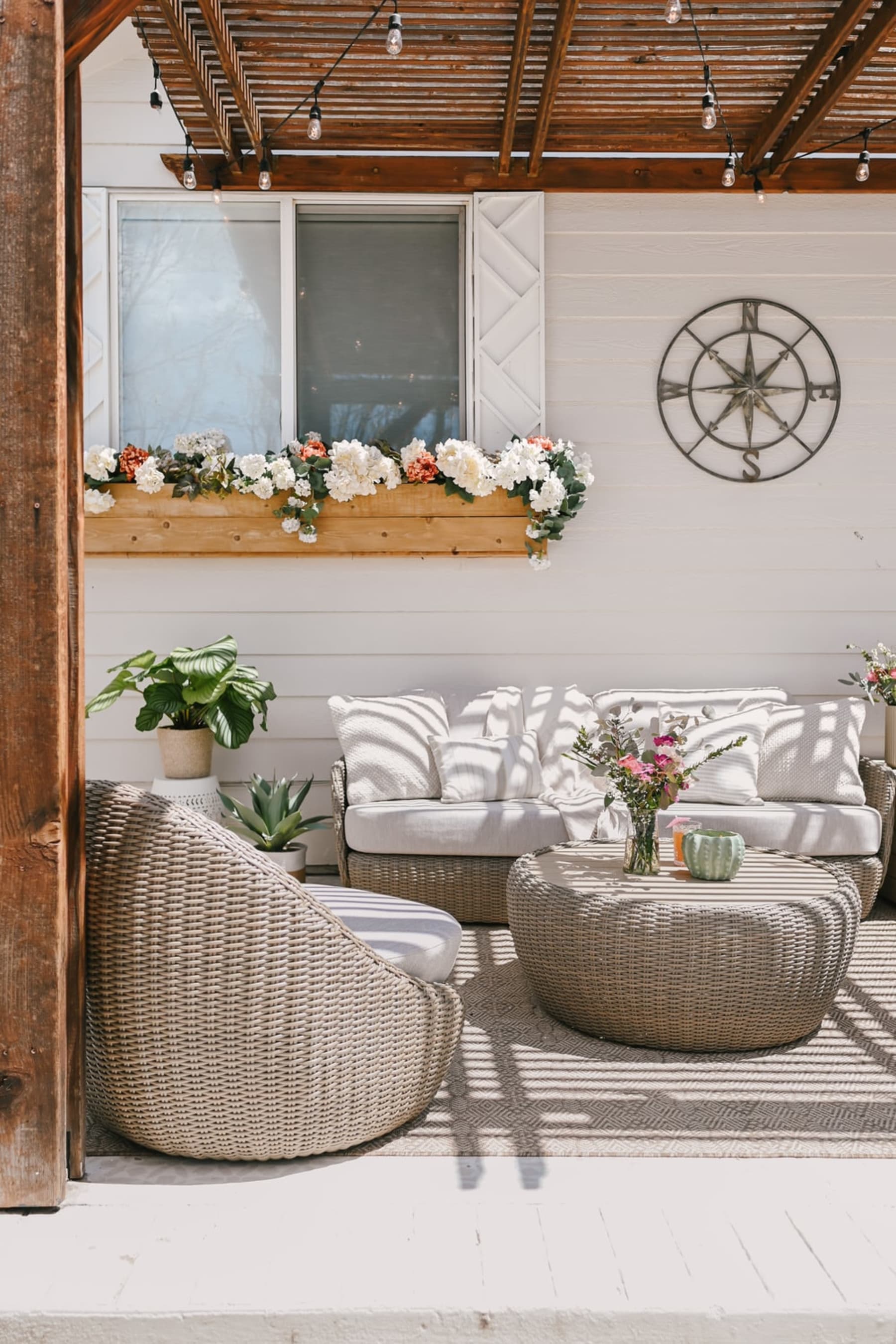
The Malta Outdoor Collection features a wicker weave and weather-resistant cushions. Picture credits: @nest.out.west
Wicker and rattan furniture can trap moisture in their weaves, leading to mold growth. Here's how to handle mold on wicker and rattan furniture:
Cleaning
Start by using a dry cloth or brush to gently remove any surface mold from the furniture. Use a vacuum cleaner to remove any debris like leaves or twigs.
Create a mixture of warm water and mild dish soap, and use a soft brush to gently scrub the moldy areas.
Drying
Ensure that the furniture is thoroughly dried after cleaning, as moisture can become trapped within the weaves.
Sunlight exposure
Place the furniture in direct sunlight for a few hours, as sunlight can help inhibit mold growth.
Preventive measures
Preventing mold growth on furniture is more effective than dealing with it after it occurs. Here are some preventive steps:
Maintain proper ventilation
Adequate ventilation helps control humidity levels, reduces moisture buildup, and improves air circulation. Ensure good air circulation in your home by using fans, opening windows, or using air purifiers.
Also, consider investing in a high-quality dehumidifier to maintain optimal indoor humidity levels (between 30% to 50%). Place the dehumidifier in areas prone to high humidity, such as bathrooms or laundry rooms.
Opt for mold-resistant furniture
When purchasing furniture, opt for mold-resistant furniture as a proactive approach to prevent mold growth and maintain the longevity of your furniture pieces. Mold-resistant furniture is designed and constructed using materials and finishes that discourage mold growth.
Some materials you can look out for include solid wood, treated wood, or metal.
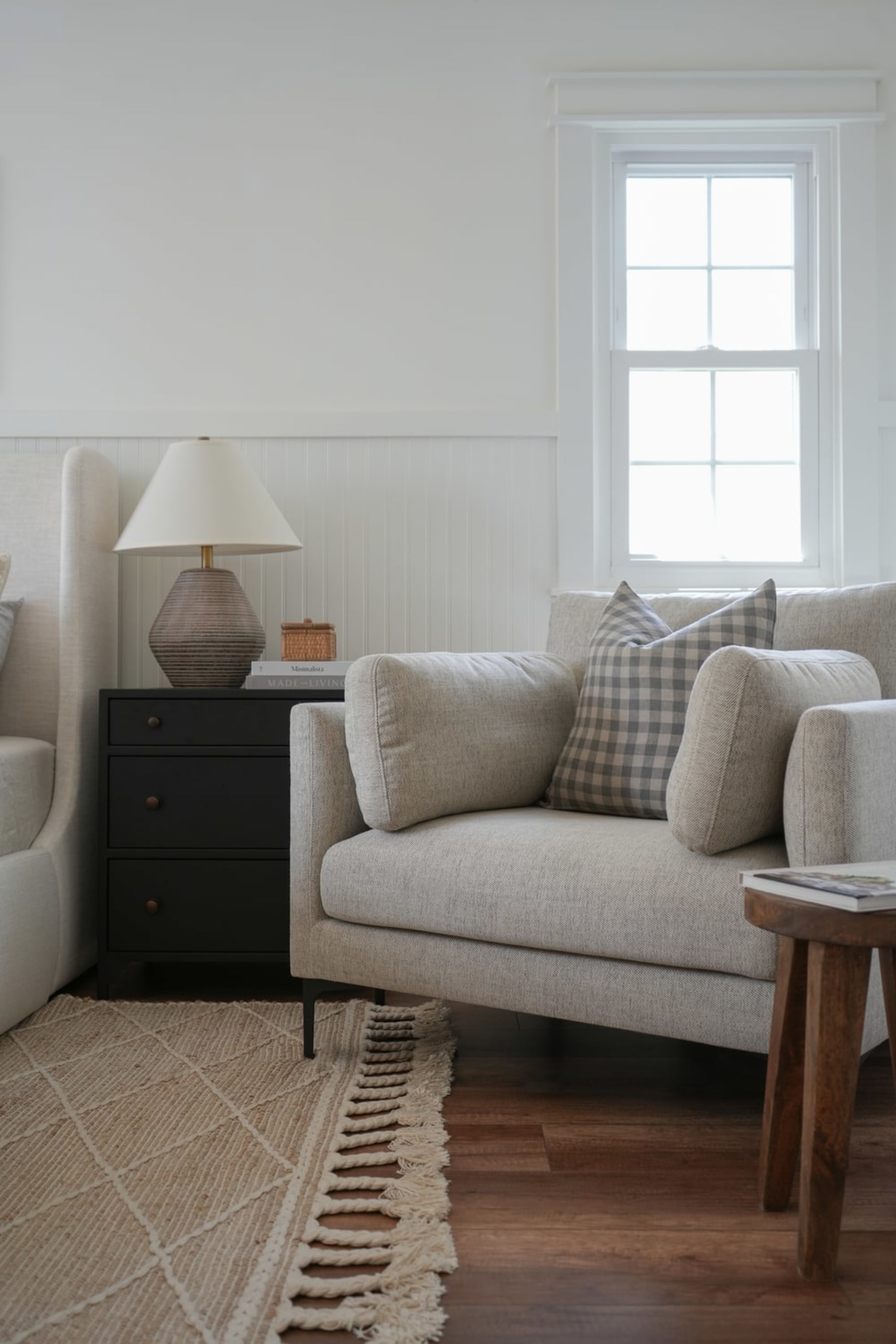
The Adams Armchair has slim customizable legs that raise it off the ground. Picture credits: @ellisandhale
Choose furniture designs that allow air to circulate underneath the pieces, reducing the chance of moisture buildup. Furniture with legs or raised bases provides better ventilation, preventing mold growth on the underside.
Regular cleaning
Needless to say, regular cleaning and dusting can help to prevent dirt and moisture buildup. Always use coasters, placemats, and furniture covers to protect your furniture from moisture. Additionally, act fast if there are any spills on your furniture so there’s a lesser chance of mold growth.
Waterproofing
Apply a waterproof sealant or coating to protect vulnerable furniture surfaces from moisture absorption. This is exceptionally important for outdoor furniture as they’re more susceptible to the elements.
Proper mold removal from furniture involves tailored approaches based on the type of furniture and the material it is made from. By following these specific guidelines, you can effectively tackle mold infestations while preserving the beauty and functionality of your furniture for years to come. Remember to always prioritize safety and take preventive measures to minimize the risk of future mold growth.
